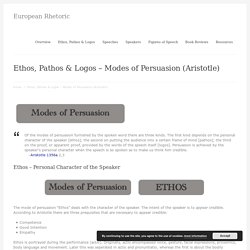

Exploring different types of communication. Helping young people develop effective communication skills is key both while they remain in education, and in the future workplace.

The activities on this page allow you to support the topic, whether you’re looking for something quick, something independent or a full length, curriculum-linked lesson plan. Teaching resources: Listening and presenting: Lesson plan and presentation slides –full lesson plan for use with a group of students in the classroomCommunication skills: Facebook live film – short film which can be used to start the lesson to provide an overview of the topic Top tips for communication: Interactive worksheet – interactive worksheet activity for independent learning whether remote or in class How will these activities improve your student’s communication skills? These activities look at some of the different communication styles such as reading, writing, speaking, listening and presenting as well as the differences between verbal and non-verbal communication.
English Language GCSE: Labrinth's Speak Out - BBC Teach. Fun English: Advanced Pronunciation Exercise—Test Your Skills – RealLife English. Are you ready to have fun while practicing your pronunciation?

Below we’ve got a entertaining poem that shows the absurdities [ridiculousness] of English pronunciation. The English language, as it’s written, is quite strange compared with languages like Spanish and Portuguese where words are always spelled like they are pronounced. Sure, there are rules for pronunciation, but a lot of times there’ll be words that have the same endings but sound different. There are many words that have the same endings but sound completely different.
To know the correct spelling of the word often just takes memorization. So let’s get started. How to Practice Your Pronunciation The best way to use this poem to practice/test your pronunciation is to: 1. 2. 3. 4. 5. 6. The Poem Direct Download to Computer on this page (From that page, you will right Click and Save) I take it you already know Of tough and bough and cough and dough.
FULLTEXT01. BBC Learning English - Pronunciation / Introduction to The Sounds of English. Från New York till Bara. Vilka frågor ställer vi för att få personer vi samtalar med att öppna upp sig?

Och hur får vi våra elever att faktiskt förstå vikten av att lyssna och ställa följdfrågor? För mina åttor blev mötet med Brandon Stanton, grundare av Humans of New York, en tankeställare. Hur lyckas han? Hur är det faktiskt möjligt för en främling att få flanörer på New Yorks gator att dela med sig av såväl sorg som glädje? Inspirerade av Brandon Stantons fotografier och de människor som han porträtterade kom idén från eleverna själva. Sagt och gjort. Innan det var dags för oss, eller rättare sagt eleverna, att bege sig ut bland Baraborna eller i Malmö som någon så gärna ville bestämde vi oss för att öva i klassen. En utvald fråga, mobilen i högsta hugg och med glimten i ögat tog eleverna tag i uppgiften. 6 Tips to Start Poetry Slamming. Basic Rhetorical Devices. Login to Borås Stad's lärplattform (PING PONG) boras.pingpong.se.
Ethos, Pathos & Logos – Modes of Persuasion (Aristotle) Of the modes of persuasion furnished by the spoken word there are three kinds.

The first kind depends on the personal character of the speaker [ethos]; the second on putting the audience into a certain frame of mind [pathos]; the third on the proof, or apparent proof, provided by the words of the speech itself [logos]. Persuasion is achieved by the speaker’s personal character when the speech is so spoken as to make us think him credible. –Aristotle 1356a 2,3 Ethos – Personal Character of the Speaker The mode of persuasion “Ethos” deals with the character of the speaker.
CompetenceGood IntentionEmpathy Ethos is portrayed during the performance (actio). The ethos of the speaker is transmitted via his self-portrayal, this mostly about nonverbal and paraverbal (vocal elements – tone, pitch, etc. ) factors. The influencing factors for ethos encompass elements such as clothes, vocabulary, slang and other social aspects like rank, popularity, etc. Retorik – Konsten att övertyga. Dessa tre ord beskriver den kraft ett tals olika argument har.

De brukar presenteras som en triangel med ett ord i varje hörn, därav min logotyp. Eftersom jag fortfarande har lite problem att klistra in bilder i liten storlek får ni använda er fantasi den här gången också. Orsaken att man placerar dem i en triangel är att dessa argument skall väga jämt. För att få bästa effekt av ett tal skall man placera dem enligt följande ordning: 1. Tänk bara på de tillfällen du besökt din doktor. 2. 3. If you can't run then walk - Martin Luther. Lemon Andersen: Please don't take my Air Jordans.
Alliteration.